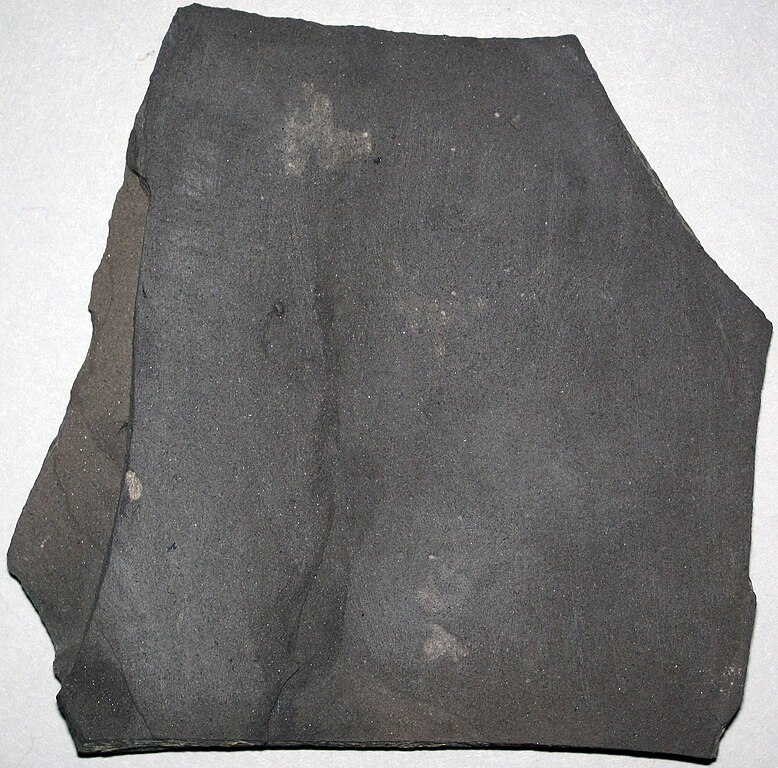Shale
Limestone is not alone when it comes to fossils. While limestone is made of mostly calcite sediments, and shale is made of mostly mud and clay sediments, both can contain fossils. From the sediments, shale contains mostly clay but also a substantial amount of quartz, along with different minerals that can add color, making it red, brown, green, black, or blue, when it’s not just a plain old gray. Most of the colors are caused by different iron minerals, but chlorite and others can play a part too. Although shale is sedimentary—and the most common sedimentary rock at that—a lot of people mistakenly call it slate when they see it. That’s a reasonable mistake, since slate is often metamorphosed shale, both types of rock can be the same colors, and both split really easily. Shale may be a humble stone made mostly of mud and clay, but it often has more to offer. Along with fossils such as trilobites, shale can contain pyrite crystals, as well as deposits of oil, as in the kind of oil used to make gasoline, heating oil, and plastics. In that case, it’s called oil shale, and oil companies can extract the oil from the rock by heating it and processing it. Unfortunately, it can take a lot of energy to extract oil from oil shale, so it’s not exactly the most efficient way to go about getting the energy we need!
| Formula | Group or Type | Shape | Hardness | Specific Gravity | Streak | Luster |
|---|---|---|---|---|---|---|
| — | — | — | — | — | — | — |
